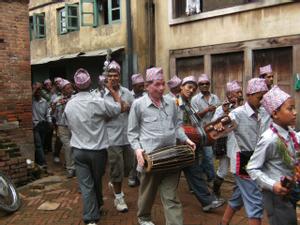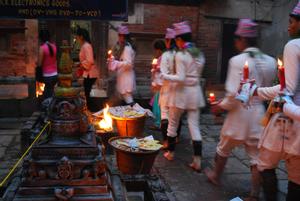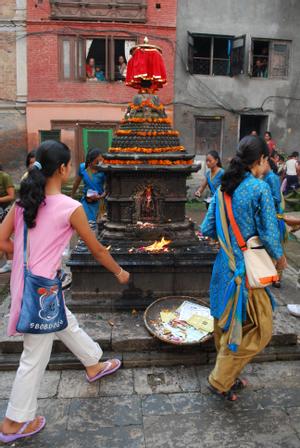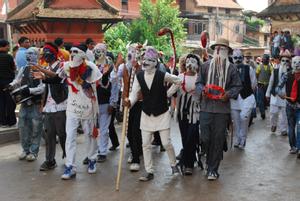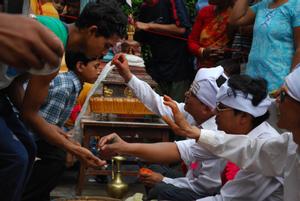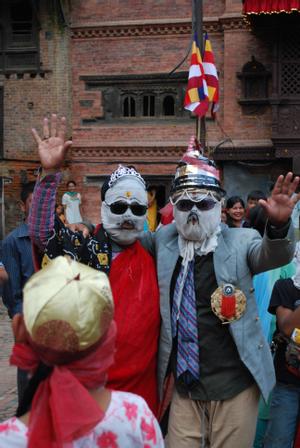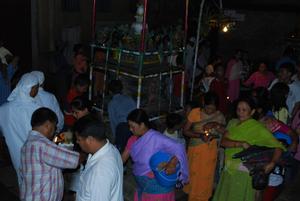Matayā
The Newari term Matayā is composed of the word mata, meaning light or lamp, and yā for yātrā (Sanskrit) or jātrā (Nepali), denoting a religious procession.
Matayā is one of the great processions circumambulating urban space which are held annually in the ancient Newar royal cities of the Kathmandu Valley. Here, the entire structure of Buddhist sites in Patan, also known as Lalitpur, is the central focus of the religious practice. Ten different town quarters take turns organizing this festival of lights, visiting all the stūpas, caityas, Buddhist shrines and other objects of worship along a set route.
The occasion for Matayā is Buddha's victory over Māra. When Buddha was meditating under the Bodhi tree and about to attain enlightenment, Māra sent his daughters to seduce him and his hosts of helpers to intimidate him. Matayā celebrates the overcoming of these "Māras," who represent a wide variety of temptations, and thus the Buddha's enlightenment.
As one of a series of festivals during the Buddhist month of Gunlā, the procession of lights provides an opportunity for participating pilgrims to earn religious merit through the practice of munificence. Along the route, offerings of light, rice, sweets, and much more are thus left at each caitya after the Vajrācārya caste priest leading the ritual asks Buddha to be present at each one. Some of the participants dress up as Māras who unsuccessfully try to distract the Buddha, others as gods along with their entourage who are delighted with the Buddha's enlightenment. In 2008, the spirits of the royal couple Bīrendra and Aiśvaryā (who were killed in 2001) were also present in the form of two men in respective disguise. Matayā is also used to accumulate merit on behalf of the deceased of the previous year. The mourners, often dressed in white, leave notes on the caityas with the names and photographs of the deceased along with Sūtra quotations.
Walter Feichtinger
